What sets Assamese dishes and cuisine apart is its unique approach to flavours—subtle yet robust, where natural ingredients take centre stage and cooking methods preserve their authenticity.
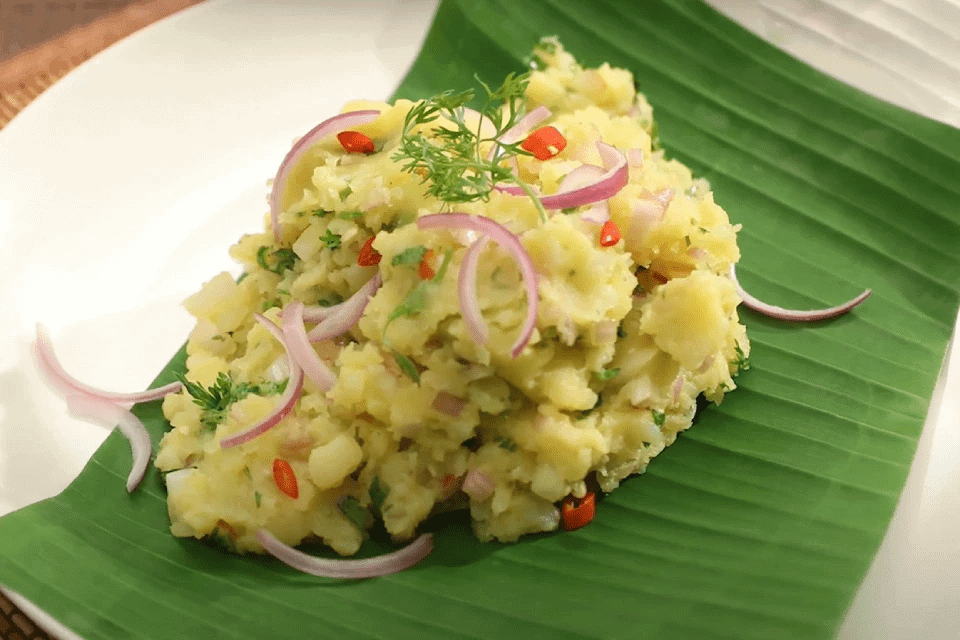
In this journey, we bring you ten iconic dishes that encapsulate the essence of Assam. Each dish tells a story, rooted in tradition and crafted with love, making them an unmissable highlight for anyone eager to savour the soul of this extraordinary state.
To understand the cuisine, we must take a look at its origin – Assam, the largest state in northeastern India. The state offers a diverse and vibrant culinary heritage that is as rich and varied as its landscapes. From lush tea gardens to sprawling river valleys, Assam’s natural bounty is reflected in its food, which showcases unique ingredients and time-honoured cooking techniques. Today, we’re exploring a selection of local delicacies that are a must-try for anyone visiting Assam.
Aloo Pitika
At first glance, Assamese cuisine may appear quite similar to Bengali cuisine. Both culinary traditions revolve around staples like rice and fish and share a common palette of spices. However, Assam dishes are generally lighter and have a distinct approach to flavour that sets them apart, emphasizing freshness and simplicity.
Take, for example, Aloo Pitika, a humble yet beloved mashed potato dish that might remind Bengalis of Aloo Bhorta. Made with just a few ingredients, Aloo Pitika embodies Assamese cooking’s straightforward, no-fuss style. It’s often served alongside rice and dal for a wholesome, satisfying meal.
What makes Aloo Pitika different from its Bengali cousin, however, is the unmistakable aroma of mustard oil. This ingredient elevates it from simple comfort food to a distinctive Assamese dish. The boldness of mustard oil adds a burst of flavour and gives the dish a depth that lingers on the palate. Easily available all across Assam, Aloo Pitika is the best gateway to Assam’s culinary culture.
Where – Mejenga, Digboi
Masor Tenga
Masor Tenga or Tangy Fish Curry is a must-have in any traditional Assamese Thali. Known for its light, tangy flavour, this refreshing dish is especially popular during the hot summer season. The curry gets its signature sourness from Elephant Apple or kokum and tomatoes, which, along with the subtle flavours of fried fish, create a satisfying taste.
Often enjoyed after a hearty meal, Masor Tenga is believed to aid digestion, making it a comforting finish to a lavish spread. Simple and quick to prepare, this curry pairs perfectly with steamed rice. Perfectly balanced, Masor Tenga is a delicious example of Assamese culinary tradition.
Where – Paro Jodi Khaa, Six Mile, Guwahati
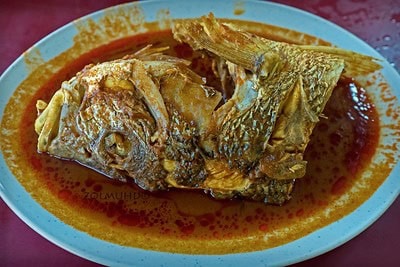
Paro Mangxo
In Assamese cuisine, pigeon meat curry is a cherished traditional dish, typically cooked with tender pigeon meat, potatoes, onions, and a rich blend of spices like garlic, ginger, pepper, and chillies. The gravy has a balanced consistency—not too thick, yet not too runny—perfect for savouring with rice.
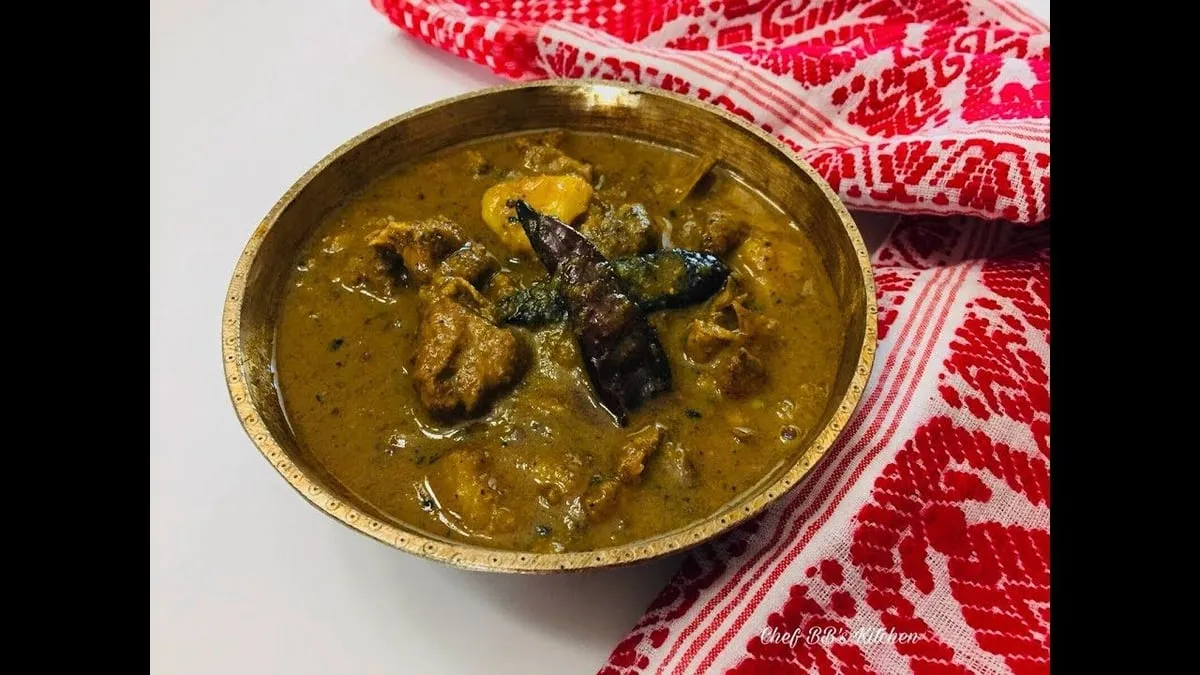
However, making it is a labour-intensive process since it involves meticulously cleaning and cutting the pigeons. In Assam, where pigeons are often reared at home, cooks usually prefer younger birds for their softer meat. Because of this intensive preparation, pigeon curry is reserved for special occasions, such as family gatherings or when children and grandchildren visit. It’s also a go-to Assamese dish for comforting those under the weather, especially with colds or fevers.
Where – Kareng the Ahom kitchen, Beltola Tiniali, Guwahati
Khorikat Diya Gahori Mangxo
Khorikat Diya Gahori Mangxo is a traditional style pork barbecue and is a particular highlight of Assam’s rich culinary heritage and its love for smoky flavours. This dish is prepared with marinated pork grilled over an open flame using bamboo sticks. The unique cooking method and the subtle infusion of smoky bamboo essence make this dish a favourite among food enthusiasts.
To prepare this Assamese dish, bamboo is cut into arm-length, thin sticks, onto which marinated pork pieces are skewered. The marinade is a blend of spices, deeply coating each piece of pork, allowing the flavours to seep in. The bamboo sticks are then carefully placed near an open fire, ensuring the pork isn’t directly exposed to the flames but rather cooked slowly by the heat. The sticks are rotated frequently, allowing each piece to cook evenly and develop a golden, caramelized crust.
The slow roasting over bamboo not only makes the pork tender and juicy but also gives it a deliciously smoky aroma that can’t be replicated with modern grills or ovens. As the pieces turn golden and crispy, the dish is ready to be savoured, often served during family gatherings or special celebrations.
Where – Khorikaa, Lachit Nagar, Guwahati
Pani Xamuk
In the culinary culture of Assam, Pani Hamuk or water snails is an exotic delicacy that celebrates the region’s close relationship with nature and bold cooking traditions. For those familiar with Assamese dishes like silkworms and pigeon curry (more on that later), Pani Hamuk offers another adventurous taste experience, one that has been part of Assam’s food culture for generations.
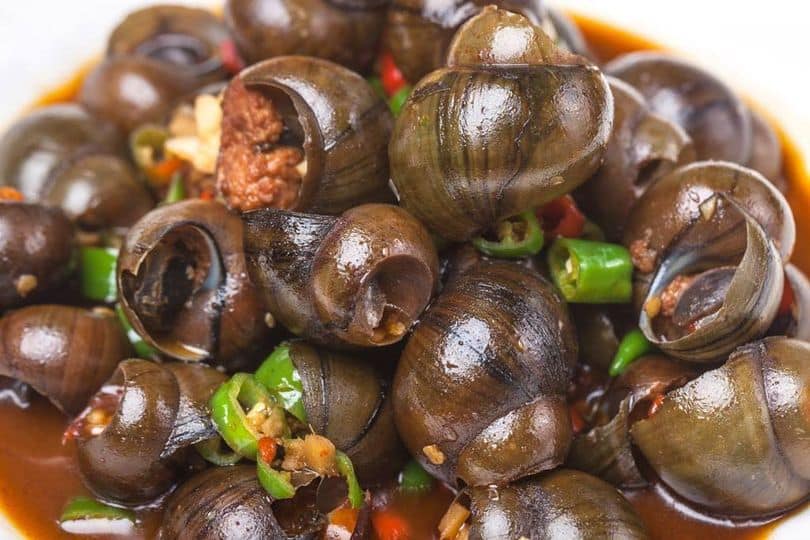
The preparation of this dish involves freshwater snails, typically cooked with ingredients like potatoes and pumpkin, which add depth and balance to the flavours. What truly sets Pani Hamuk apart, though, is the eating experience itself. One sucks the meat directly from the snail shells, which preserves the essence of the flavours. While it may be seen as an unusual dish to outsiders, it is enjoyed in Assan for its earthy flavours and the tactile enjoyment it offers and is often served as a special treat at family gatherings or seasonal festivities.
Where – Zarwo the Bodo kitchen, Chandmari, Guwahati
Chicken with Axone
Axone, a traditional paste made from fermented soybeans, is a cherished ingredient in Naga cuisine and is also enjoyed in parts of upper Assam. Known for its unique and pungent aroma, axone is a versatile flavour enhancer that transforms simple ingredients into something more. This ingredient holds a special place in the hearts of many across northeastern India, symbolizing both tradition and the bold flavours characteristic of the region.
One of the most popular ways to use axone is in a rich chicken dish, where the paste is cooked down with onions, garlic, ginger, and a blend of spices. The cooking process softens the axone’s pungency while releasing a tangy, umami-packed flavour that deeply infuses the meat. This results in the chicken being tender and juicy, with a distinct and complex taste.
Where – The Monk’s Kitchen, Xujya Mukhi Path, Duliajan
Duck with Black Sesame Seeds
Homestyle curries from Assam are renowned for their distinctive and bold flavours, often featuring unique, regional ingredients that make them stand out. One such is Til Diya Hanh Mangxo, a black sesame duck curry usually reserved for special occasions. In this Assamese dish, the star ingredient is til, or black sesame seeds, which bring a unique smoky, nutty depth to the flavour profile.
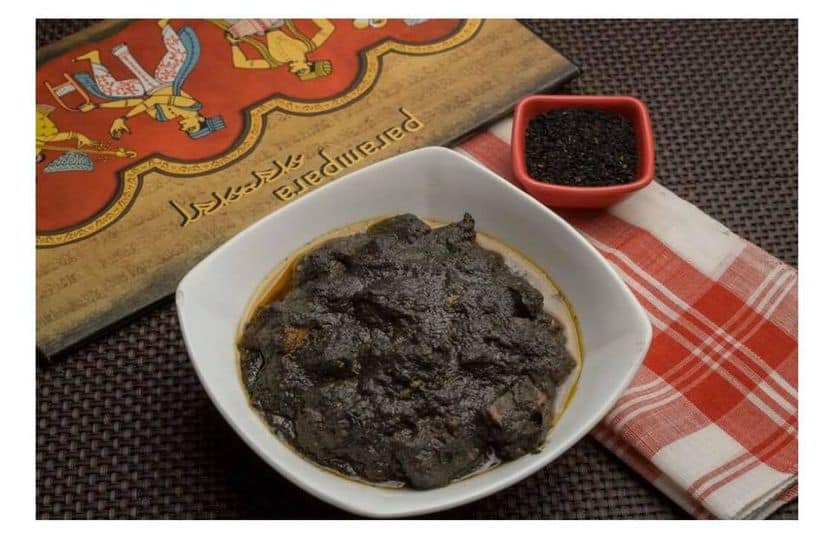
The preparation of this curry involves toasting black sesame seeds to release their oils and enhance their rich, earthy flavour. Once perfectly toasted, the seeds are ground into a fine powder, which is then used to coat tender pieces of duck, creating a hearty, robust dish with layers of smokiness and spice. The spices, along with the sesame, infuse the duck, making it juicy, tender, and deeply flavorful. Traditionally served with steamed rice, Til Diya Hanh Mangxo is best enjoyed and eaten with your hands.
Where – Paradise restaurant, Silphukuri, Guwahati
Polu or Leta
If you crave a bit of adventure in your diet, stir-fried Polu or Leta (silkworms) just might be the perfect dish to try. This exotic Assamese dish, often described as crunchy on the outside and soft and moist on the inside, is a celebrated cultural favourite all across the state. While the idea of eating silkworms may surprise some, in Assam, they’re a prized delicacy.
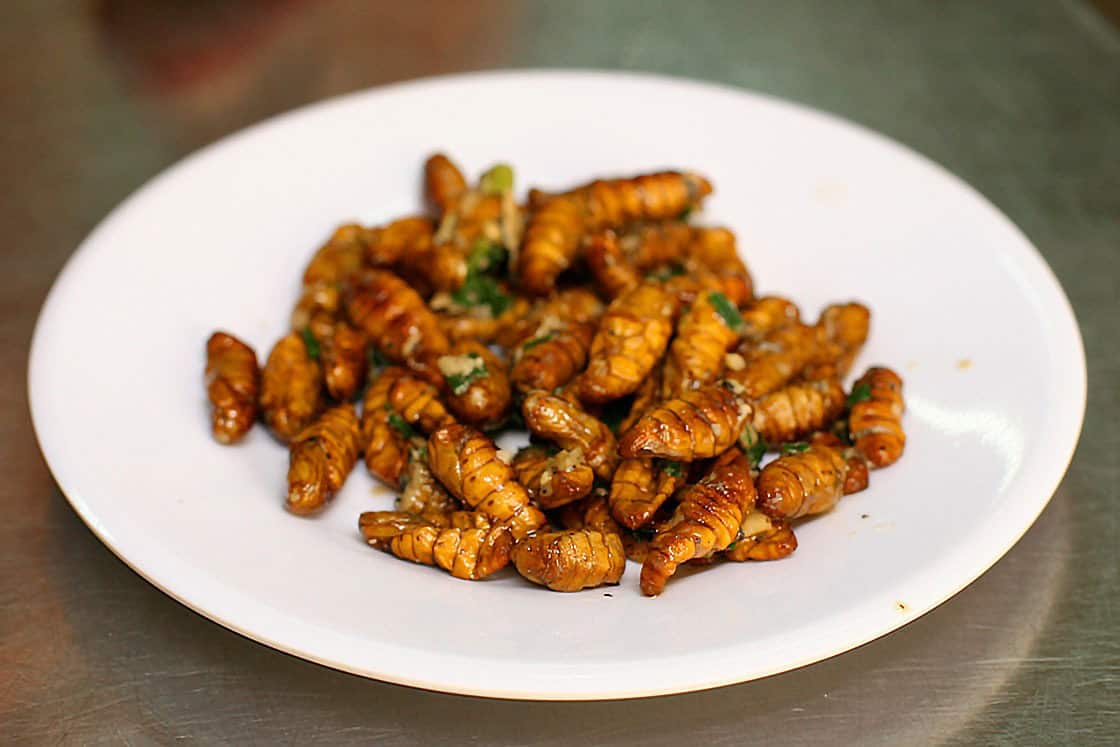
This dish is made from the cocoons of silkworms after the silk has been extracted, allowing you to taste the insects themselves without any fibres involved. The silkworms are stir-fried with a blend of spices, creating a savoury, slightly spicy dish with a distinctive crunch that’s as satisfying as it is surprising.
Where – Aanwi Bodo kitchen, Ganeshguri, Guwahati
Ghila Pitha
In Assamese cuisine, Pitha or rice cakes hold a special place in both everyday and festive meals. These traditional cakes come in many forms and flavours, each highlighting local ingredients and reflecting the region’s deep culinary heritage. Whether steamed, fried, or pan-roasted, pithas are made primarily with rice flour and are often mixed with ingredients like jaggery, coconut, and sesame seeds to create a variety of delightful textures and flavours.
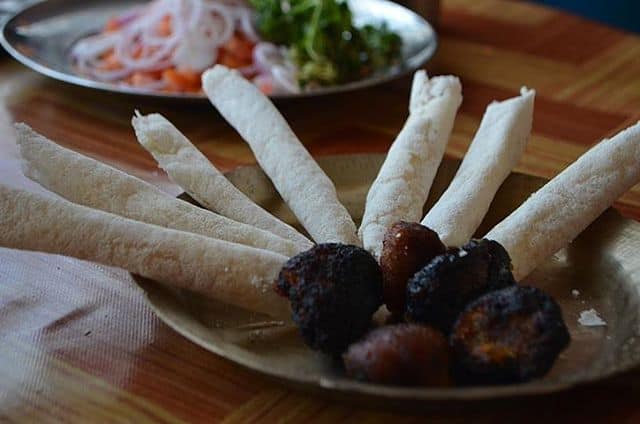
One popular type of pitha, particularly enjoyed during the Magh Bihu festival, is Ghila Pitha. Unlike other steamed pithas, Ghila Pitha is deep-fried, giving it a distinctive, crispy outer layer that contrasts beautifully with its soft, sweet interior.

Made from wheat flour, jaggery, and freshly grated coconut, the ingredients are combined to form a dough, shaped into small balls, and fried until golden. The result is a crunchy exterior that gives way to a sweet, coconut-infused filling—a perfect blend of texture and flavour.
Where – Goyari Pitha Centre, Rahdhala
Joha Saulor Payokh
Kheer is a dessert known by many names across India, including payesh, payasam, and phirni, depending on the region. Joha Saulor Payokh is a kind of kheer. Originally, it was a celebration of milk-based desserts, evolving over centuries into various regional interpretations that are loved across the country. When the British encountered this rich, creamy dessert during colonial times, they were so captivated that they adapted it into their own cookbooks, leading to the rice pudding that often appears on Western menus today.
In Assam, kheer is distinctively made with black rice, an indigenous variety that gives this dessert a unique, nutty flavour and striking purple hue. Black rice, once rare and reserved only for the wealthy, eventually became accessible to everyone, allowing this special dessert to become a household favourite. Black rice kheer is a symbolic Assamese dish often prepared during festivals and celebrations.
Where – Gam’s Delicacy, Ganeshguri, Guwahati
All the dishes are markedly different from others, and you may have to go to specific places to try them out. However, these are also a glimpse of the breadth and medley of Assamese culture.
Read more – Food Voyager



